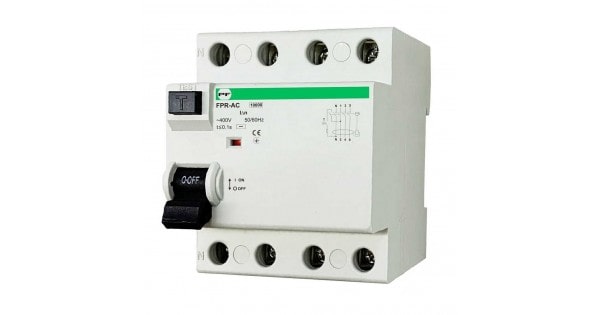Дифреле и дифавтоматы – это очень похожие устройства. Они отличаются по конструкции и принципу работы. Рассмотрим более подробно их особенности и отличия.
Базовые характеристики
Под дифреле понимается устройство, защищающее потребителей от поражения электрическим током при непосредственном контакте с токопроводящей поверхностью. К примеру, неизолированным проводом, электрическим аппаратом, корпус которого попал под напряжение.
Дифференциальное реле – устройства, необходимые для защиты от пожаров на оборудовании с поврежденной изоляцией и неисправной электропроводкой. Эти УЗО размыкают цепь при возникновении в проводке, если возникает дисбаланс тока.
Промышленность выпускает дифреле двух разновидностей:
- Тип АС. Такие реле призваны реагировать на утечку синусоидальных переменных токов.
- Тип А. Предназначены для установки в тех цепях, которые питают оборудование, имеющее в своем составе выпрямители или тиристоры. То есть там, где в случае пробоя изоляции возникает утечка как постоянного, так и переменного тока. Указание по установке таких реле встречается в инструкциях по эксплуатации некоторых бытовых приборов.
Чем дифреле отличается от дифавтомата?
Дифреле или УЗО с дифференциальным автоматом имеет некоторое сходство, особенно внешнее, но принцип действия этих приборов существенно отличается. Дифференциальное реле предполагает проведение моментального векторного анализа тока по фазе – 0.
Если сумма векторов отлична от нуля, механизм получает сигнал на размыкание цепи, то есть реагирует на утечку электротока. Дифавтомат реагирует на так называемые сверхтоки, возникающие при перегрузке и коротком замыкании, хотя некоторые из этих приборов реагируют и на утечку тока в землю, выполняя функции автомата и реле одновременно.
Поскольку дифреле и дифавтомат невероятно схожи, отличить их дилетанту-электромонтеру достаточно сложно – необходимо знать маркировку. Да и установку приборов, способных защищать от возгораний и, как следствие, обеспечивать безопасность жизни и здоровья, лучше доверять квалифицированным мастерам.
Данные агрегаты монтируются после вводного счетчика в электрощите на закрепленной DIN-рейке. При напряжении 220 В у них две клеммы на входе и две на выходе. На промышленных предприятиях и в местах, где предусмотрено напряжение 380 В, на входе и выходе устанавливается по четыре клеммы. Эти нюансы следует обязательно учитывать для должной эксплуатации устройств.

